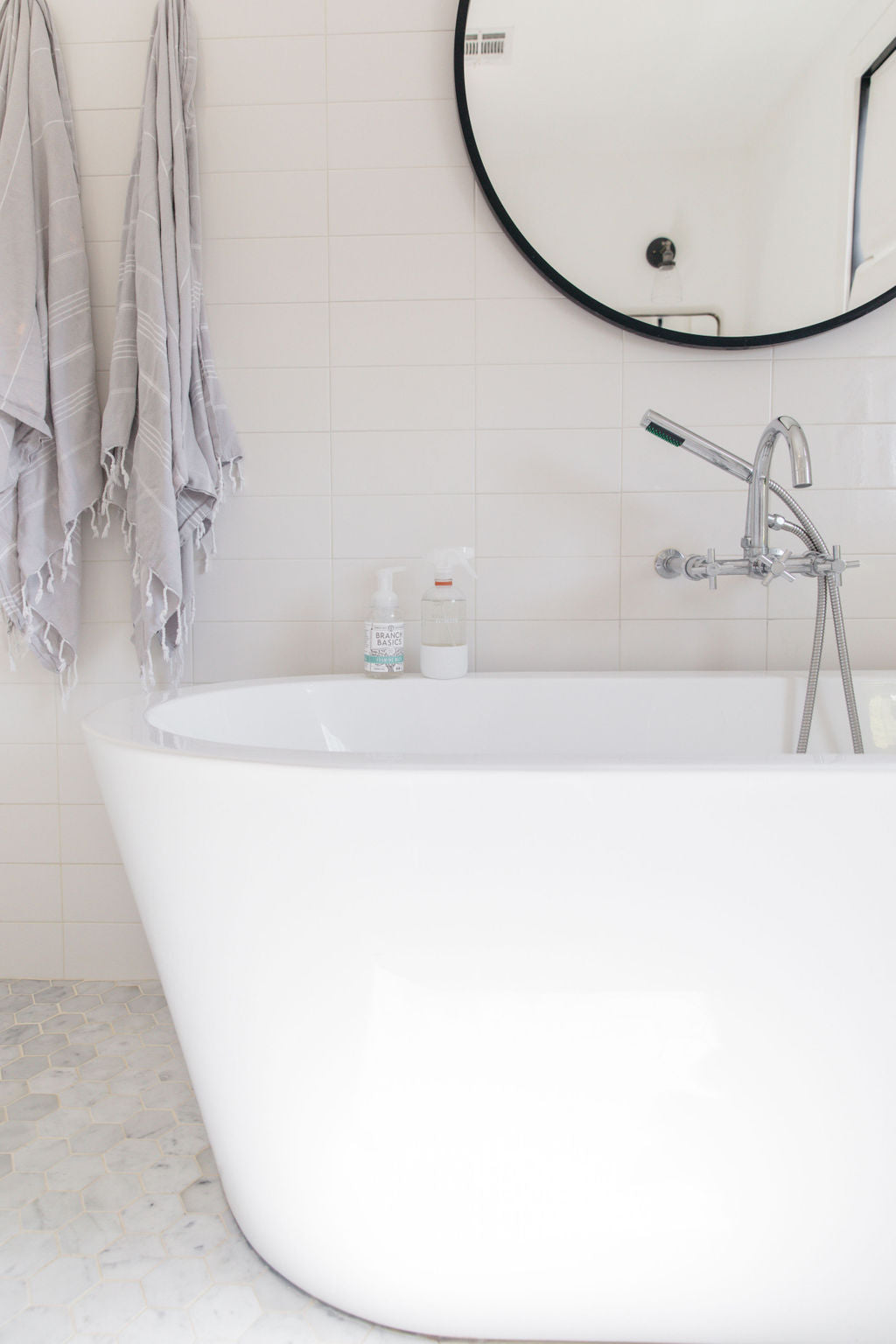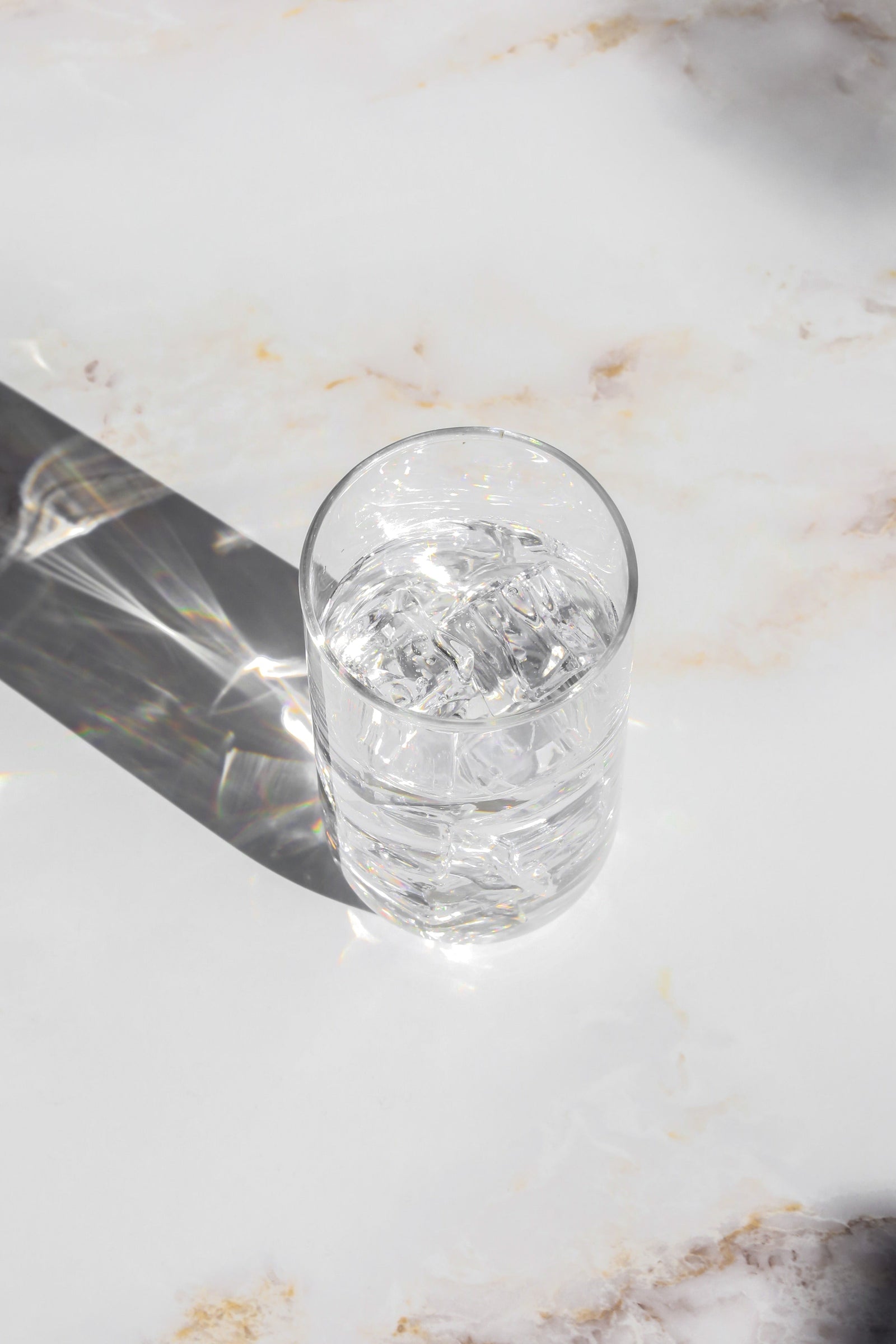The Benefits of Hot & Cold Therapy (aka Hydrotherapy)

You've probably heard about ice baths, saunas, and similar hot/cold therapies in the past few years. It's been slowly gaining moment in the holistic health world, and there's a reason why!
Hydrotherapy is a therapeutic practice that involves the use of water in various forms, temperatures, and pressures to promote health, relieve pain, and improve well-being.
It has been used for centuries across different cultures. It is used by many naturopathic physicians to treat a plethora of chronic diseases as hydrotherapy supports the body's innate ability to heal.
We love adding hydrotherapy into our routine, especially if we are feeling stress either physically or mentally!
What is hydrotherapy?
Hydrotherapy is one of the fastest and most powerful ways to move blood in and out of an area of the body, increasing blood flow.
Hot water, when applied to the surface of the body, dilates the capillaries and veins while drawing the blood up from the depths of the body. The heat also relaxes muscles, promoting lymphatic flow, while taking pressure off nerves and encourages waste removal.
Cold water has the opposite effect and has an invigorating effect on the body. It contracts the capillaries and veins on the surface of the body and drives the blood deep into the center of the body.
It contracts the muscles, which pushes the lymphatic fluid out of the area while massaging the nerves. Cold is stimulating, and it causes superficial blood vessels to constrict, shunting the blood to internal organs.
Alternating between these temperature extremes amplifies hydrotherapy's benefits. The shift amplifies the elimination processes, reduces inflammation, and improves overall circulation!
Benefits of hydrotherapy
So what are the exact benefits of hydrotherapy? We'll tell you:
1. Improves circulation
The hot water brings the blood to the surface of the body while the cold water pushes it down. Alternating these temperatures propels the traveling of the blood, optimizing its flow. Hydrotherapy promotes waste removal and white cell production.
2. Pain management and injury recovery
Heat relieves pain by stimulating the nerves throughout the body and relaxes the muscles. The increased blood flow of alternating between hot and cold water allows your body to efficiently eliminate and decrease inflammation.
3. Physiological benefits
Hydrotherapy has a calming effect on the nervous system. The sensation of the gentle support of water can promote relaxation, reducing stress and anxiety. Engaging in hydrotherapy provides an opportunity to focus on the body and its sensations. This mindfulness aspect can also help individuals become more aware of how their body feels and reduce the negative impact of stress.
Incorporating Hot/Cold Therapy Into Your Routine
Here are some simple ways you can incorporate hot/cold therapy into your routine to reap the benefits:
Shower method
- After you have finished cleansing your body in the shower, increase the temperature until it’s as hot as you can stand it. If you have any injuries, blocked lymph, areas of pain, etc. position your body to give attention to those areas.
- Once you have had the hot water on for approximately 1 minute, decrease the water temperature quickly so that cold water hits your body. Leave the cold water on for 15 to 30 seconds.
- Once your body is thoroughly cold, turn the hot water back up slowly until the water is as hot as you can stand it. Leave for one minute.
- Repeat the procedure seven times, ending in cold if you shower in the morning and ending in hot if you shower before bed.
Foot bath method
- Fill two buckets/basins, that can hold both of your feet in, of water. One bucket should be with water as hot as you can stand it, and the other with cold.
- Put both feet into the bucket with hot water for approximately 1 minute.
- Then, put both feet into the cold bucket for 15 to 30 seconds.
- Repeat the process 7 times and end with cold water.
Hot & cold compresses, targeting specific areas
- Fill two buckets/basins of water, one with cold water and the other one with hot water. Place a bath towel in each bucket.
- Take the towel from the hot water, wring it out, and place on the affected area for approximately 5 minutes.
- Then after removing the hot towel, take the towel from cold water, ring it out, and put it on the same area for 1-2 minutes.
- Repeat about 7 times and end with cold water.
Sauna
- Sit 10 minutes in a sauna or steam room.
- Immediately after sauna use, enter a cold shower or tub. Start with spending 30 seconds in the cold water and work your way up to 2 minutes or so.
- Repeat the process 2-3 times, ending with the cold water.
Create an ice bath
- Fill a tub with cold water and add ice cubes.
- Monitor the temperature - you can safely aim for 50-59°F (10-15°C).
- Step into the ice bath gradually.
- Try your best to breathe easy and aim for 1-2 mins, but don't be discouraged! You can work your way up to this time. Keep limbs moving to reduce numbness.
- When done, warm up gradually with layers. It helps to go into a sauna or warm up under a warm shower, too.
Our Recommendation
Incorporating hydrotherapy into your everyday routine can be a transformative step towards your overall health goals. It enhances circulation, boosts immunity, and facilitates our natural detoxification process.
Beyond its physical advantages, hydrotherapy is also great for mental relaxation, unwinding the knots of stress and anxiety.
This is also a wonderful exercise to practice mindfulness, engaging with your body’s sensations and increasing self-awareness. The hardest part is soothing the mind, especially during the cold therapy!
How often you use hydrotherapy varies based on your body and goals.
We recommend starting gradually and then working your way to incorporate this practice more and more.
Pay close attention to how your body reacts after each session. If you experience any discomfort, excessive fatigue, or other adverse effects, it might be an indication to reduce the frequency or intensity of hydrotherapy sessions!
To dig into more wellness content, check out 16 Ways to Activate Your Lymphatic System, The Benefits of Vitamin D and The Brain Gut Connection.
Categories

Allison Evans
Allison has dedicated herself to helping others reap the benefits of clean living. She, along with her husband and two daughters left Houston for the country life as she heals from a recent mold exposure and diagnosis of chronic Lyme disease. Follow her story on our Instagram and read more about her Journey to Fertility.








